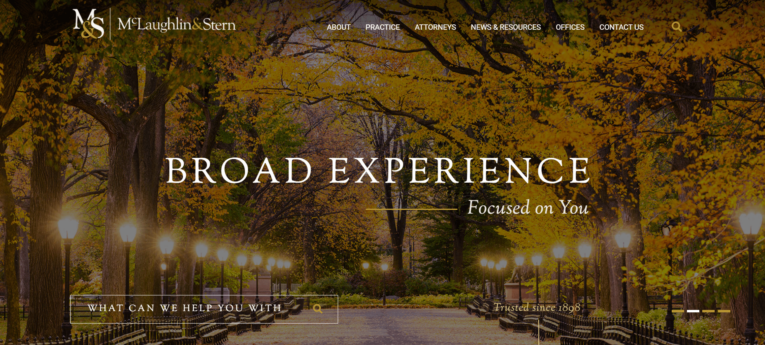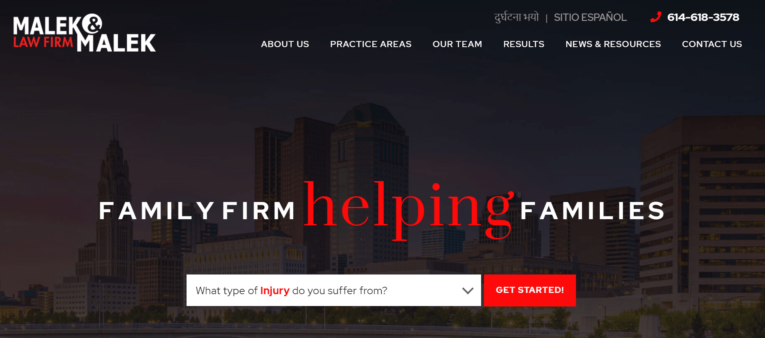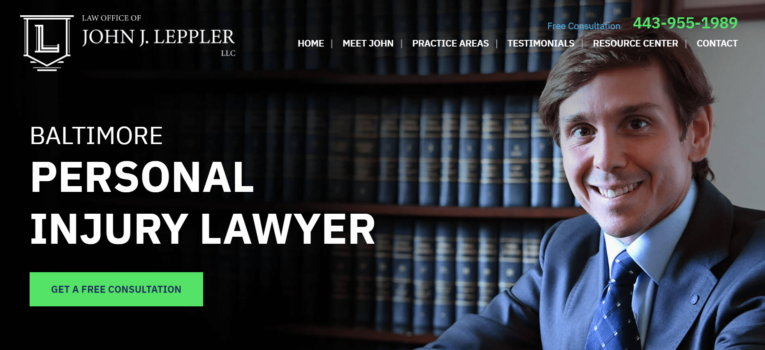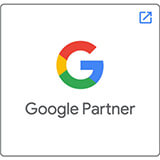2024 Update: The Different Types of Home Page Content

Types of Home Page Content Styles
Your home page content is an important, if not the most important, aspect of your website. It is the introduction to your brand and should reflect your firm values and goals and be easily understood.
The different types of content generally fall into three categories:
#1 – No unique content
Law firms who choose to have no content are typically looking for something creative in terms of imagery. Often the images and taglines are related making connections with art, words, or animation. Websites with no unique content on the home page lose a marketing opportunity, but alas, not all law firms care to rank in search engines. At PaperStreet, this is the least common of the three options.
#2 – Minimal content
Minimal content refers to content that is less than 500 words on a page. It’s true that 500 words may seem like a lot, but when consider they are often design elements like testimonials, practice area boxes, expand/collapse sections, etc. the text doesn’t seem too cumbersome. At PaperStreet, firms with minimal content are more common than not. The standard for most of our websites is content of around 500 words.
#3 – Extensive content
We consider extensive content 750 words or more. At PaperStreet, we require all of our internet marketing clients to have a home page with a word count of at least 1,000 words. Why? A longer home page expands your footprint on the web and creates more opportunities not only for conversions but also rankings. If your main law firm website goal is to get more clients via the website, you need a longer home page style.
Choosing a Home Page Content Style
Choosing a home page content style is more than picking your favorite type, and the decision goes beyond looks, too. You should first and foremost consider your marketing goals.
As yourself these questions when elevating the best approach for your home page content:
- What should absolutely be communicated on the home page?
- What should users understand in the blink moment (the first 3 seconds they are on the site)?
- What is the desired action for users to take (complete a contact form, learn more about the attorneys, pick up the phone and call)?
- Why are users coming to my site? How are they getting here (Google search, referral, on their own)?
No Unique Content
Choosing to have no unique content on your website home page lets other aspects of the website shine, like the home page slides, blog, social media, or featured attorneys. If you have a strong blog platform (you post content regularly and it is always fresh), this is a great option, as updated and current content is one of the best ways to establish trust with a potential client.
Check out these examples that showcase other parts of the website on the home page.
Kirwin Norris
The focus of the home page is on the recent results rotator on the left-hand side.


Ellis & Winters
The home page features a bold image and phrase that encourages you to learn more about their mission.


Minimal Content with Strong Prose
Minimal content on a home page tends to share a strong message. It has one clear and direct message and it delivers that message in just a few sentences. A home page with minimal content is ideal for a client who knows exactly what they want to say. Often these firms are gaining visitors to their websites as referrals. In this case, there is not a need to advertise all practice areas and attorneys right upfront. The prose stands to verify the law firm and their professionals, not necessarily convert new clients.
Gipson Hoffman & Pancione
The second home page scroll opens up with a paragraph, listing of practice areas, and button into the Attorney page.


Palmieri Tyler
Palmieri Tyler’s website has two minimal scrolls into a strong paragraph about the firm and a practice area bar with sentence descriptions.


McLaughlin & Stern
Notice the search feature on the right-hand side? Using a predictive search feature is a great way to invite users to inside pages. The PaperStreet team uses formulas and functions to make all content on your website (practice pages, biographies, blog posts, etc.) searchable.


Extensive Optimized Content
A law firm website home page with extensive content is ideal, and really the only option, for any attorney whose main concern is search engine optimization. If you want to rank high In Google, you need content on the page, anywhere from 750 words to 1,000+ words, broken into different sections as to not overwhelm the reader. Examples include a section for featured attorneys, practice areas, advantages of working with the firm, contact information, benefits, testimonials, FAQs, etc.
I know. It’s a lot of content. We break it up into sections on the home page using design features like lines, shading and rollovers. These features help viewers digest everything more easily and allows them to scan the page for the the most important information for their specific needs.
The websites below are examples of home page content that was created for ranking high.
Malek & Malek Law Firm
Malek & Malek Law Firm utilize a drop-down search feature to point users to specific injury pages. They utilize many design and content elements, especially lists, to develop a long home page that looks pleasing.


Martin & Jones
In this example, our award-winning design team has organized testimonials, opening text, practice area features, testimonials, results, videos, attorneys, and a new spotlight into one long website scroll.


Law Office of John J. Leppler LLC
The website for Law Office of John J. Leppler LLC is shorter than the example above, but an ideal example for how you can use all the content on a long home page to showcase personality.


Discover the Right Fit for Your Law Firm Website
Looking for more information about crafting your home page and website content? We have a team of experts who can help with that. Reach out to PaperStreet – the leading law firm website design and internet marketing provider.







